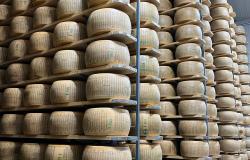 The golden age of former imperial capital Ravenna is celebrated in a show here which unveils a new example of the mosaic floors for which the northern Italian city is famous.
The golden age of former imperial capital Ravenna is celebrated in a show here which unveils a new example of the mosaic floors for which the northern Italian city is famous.
The show, Santi Banchieri Re (Saints, Bankers and Kings), spotlights the VI Century AD development of the city after it replaced Rome as capital of the Western Roman Empire and later became capital of the Byzantine Empire. It tells the story of the rulers who built the finest Byzantine churches outside of Constantinople (present-day Istanbul).
The show, open until March 3 in the city's San Niccolo church, also explores Ravenna's influence throughout the Mediterranean with 100 pieces including mosaics from as far away as Syria.
It also has a host of holy relics, illuminated manuscripts and intricately decorated capitals.
Among the fascinating characters recalled are the immensely rich banker Giuliano l'Argentario and St Severus, the 12st bishop of the city who is buried at the old Roman naval headquarters at Classe (Latin for 'fleet').
Classe, just outside Ravenna, boasts the city's pride in the beautiful mosaics at the basilica of St Apollinare.
Art lovers have been flocking to Ravenna's mosaics for years but this time they have an added attraction.
The show unveils for the first time to public view the mosaics of the church of St Severus, object of pilgrimages for centuries.
St Severus, a weaver who was elected bishop after a white dove kept landing on his shoulder despite his efforts to shoo it away - seen as a sure sign of the Holy Spirit - is the patron saint of weavers and hatters.
The mosaics were found in an excavation in the 1960s but kept out of sight because of their delicate condition. After recent restoration work, they have been presented to mosaic lovers as a final piece in the city's famous floor decorations.


